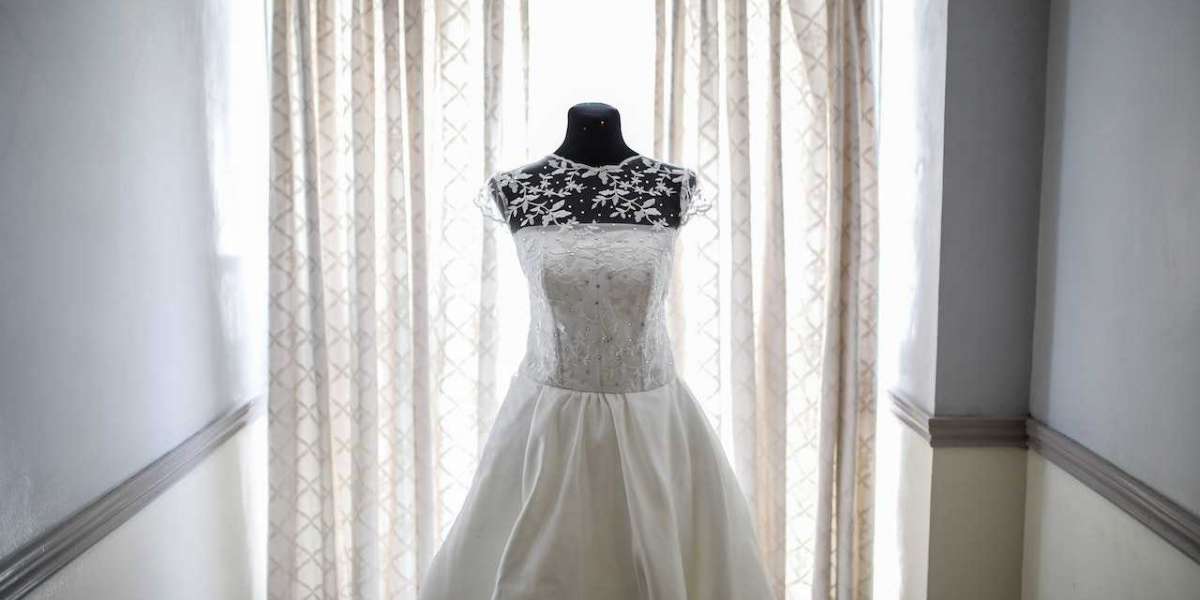
Wedding dresses have long been a symbol of cultural values, societal norms, and personal expression. The style and colour of these dresses have evolved significantly over the centuries, reflecting changes in fashion, traditions, and social dynamics. This article explores the traditional evolution of wedding dress styles and, more importantly, the colours that have defined bridal fashion across different eras.
Early Beginnings: Diverse Traditions
In ancient times, wedding dresses did not adhere to a single colour or style but varied widely across cultures. In ancient Rome, brides wore tunics with a belt tied in a "Herculean knot," symbolizing fertility and marital fidelity. The colour of the tunic was often a deep yellow, associated with happiness and prosperity.
Similarly, in ancient China, red was the preferred colour for wedding attire, symbolizing luck, joy, and prosperity. Brides wore elaborate red dresses, adorned with intricate gold embroidery, to invoke good fortune and happiness in their married life.
The Medieval Period: Wealth and Status
During the medieval period, weddings were often alliances between families or kingdoms, and the bride's attire was a display of wealth and social standing. Brides wore luxurious fabrics like velvet, silk, and fur, dyed in rich, vibrant colours such as red, purple, and gold. These colours were expensive to produce and signified the family's affluence.
The emphasis was on showcasing the family's wealth rather than the bride's individual beauty. The gowns were often heavily embellished with embroidery, jewels, and fur trim, making them opulent and extravagant.
The Renaissance Era: Artistic Flourish
The Renaissance era brought about a renewed interest in art, beauty, and individualism, which influenced bridal fashion. Dresses became more elaborate, featuring detailed embroidery, pearls, and precious stones. Brides in this period wore gowns in a variety of colours, including blue, a symbol of purity and fidelity, and green, representing fertility and growth.
Bridal attire reflected the artistic and cultural rebirth of the time, with an emphasis on beauty and personal expression. The use of lace and other delicate fabrics became more prevalent, adding to the gowns' elegance and refinement.
The Victorian Influence: The White Wedding Dress
The most significant shift in the colour of wedding dresses came during the Victorian era, with the marriage of Queen Victoria to Prince Albert in 1840. Queen Victoria chose to wear a white satin gown adorned with Honiton lace, breaking away from the tradition of wearing coloured dresses. Her choice of white was intended to symbolize purity and innocence.
Queen Victoria's white wedding dress set a new standard in bridal fashion, and white quickly became the preferred colour for wedding dresses among the upper classes in Western society. The symbolism of white as a representation of purity and virginity became firmly established.
The Early 20th Century: Changing Norms
The early 20th century saw significant social changes, including the women's suffrage movement and a shift towards more modern lifestyles. These changes were reflected in bridal fashion, with the emergence of new styles and a broader acceptance of different colours and designs.
The flapper style of the 1920s introduced shorter hemlines and more relaxed silhouettes, moving away from the restrictive corsets and voluminous skirts of the Victorian era. White remained popular, but other pastel shades, such as ivory, pale pink, and light blue, also became fashionable, offering brides more choices and allowing for individual expression.
The Post-War Boom: Return to Tradition
The post-war boom of the 1950s brought a return to traditional femininity in bridal fashion. Brides embraced full skirts, cinched waists, and lavish fabrics, often inspired by Hollywood glamour. White and ivory remained the dominant colours, symbolizing purity and new beginnings.
This period also saw the rise of bridal boutiques and specialized wedding dress designers, catering to the growing demand for unique and personalized gowns. Weddings became more elaborate and consumer-driven, reflecting the economic prosperity and cultural emphasis on domestic life.
The 1960s and 1970s: Boho and Individualism
The social revolutions of the 1960s and 1970s brought about a more relaxed and individualistic approach to bridal fashion. The bohemian style became popular, with brides opting for simple, flowy dresses made from natural fabrics. The influence of the counterculture movement was evident in the preference for non-traditional, whimsical designs.
During this time, white remained a staple, but more brides began to experiment with colours and styles that reflected their personal tastes and beliefs. Earth tones and floral patterns became common, especially for outdoor and less formal weddings.
The 1980s: Extravagance and Bold Statements
The 1980s saw a return to extravagance in bridal fashion, influenced by the lavish wedding of Princess Diana to Prince Charles in 1981. Her voluminous white gown with its iconic 25-foot train set a trend for grand, statement-making dresses. The era was characterized by bold styles, puffed sleeves, and dramatic silhouettes.
White continued to dominate, but the emphasis was on creating a visually striking and memorable look. Brides sought to emulate the fairytale weddings of royalty and celebrities, leading to a decade of opulent and ornate bridal fashion.
The Modern Era: Diversity and Personalization
In recent years, bridal fashion has become more diverse and inclusive, reflecting broader societal changes. The modern bride has a plethora of choices, from traditional ball gowns to minimalist sheath dresses, jumpsuits, and even colourful gowns.
White and ivory remain popular, but there is a growing acceptance of non-traditional colours, including blush pink, champagne, and even bold shades like red and blue. Personalization and individuality are key trends, with brides seeking dresses that reflect their unique personalities and styles.
The rise of sustainability and ethical fashion has also influenced bridal wear. Many designers are incorporating eco-friendly materials and practices, catering to brides who prioritize environmental responsibility. Vintage and second-hand dresses have gained popularity, aligning with the growing trend towards sustainability.
Conclusion
The evolution of wedding dress styles and colours is a reflection of societal values, cultural shifts, and individual expression. From the rich, vibrant colours of the medieval period to the iconic white dresses popularized by Queen Victoria, bridal fashion has continually adapted to reflect the times.
Today, the wedding dress remains a powerful symbol of love, commitment, and personal identity. As society continues to evolve, so too will the styles and colours of wedding dresses, embracing new trends and cultural influences while preserving their timeless significance. Whether traditional or modern, the wedding dress continues to be a cherished element of the wedding experience, embodying the dreams and aspirations of brides across generations.








